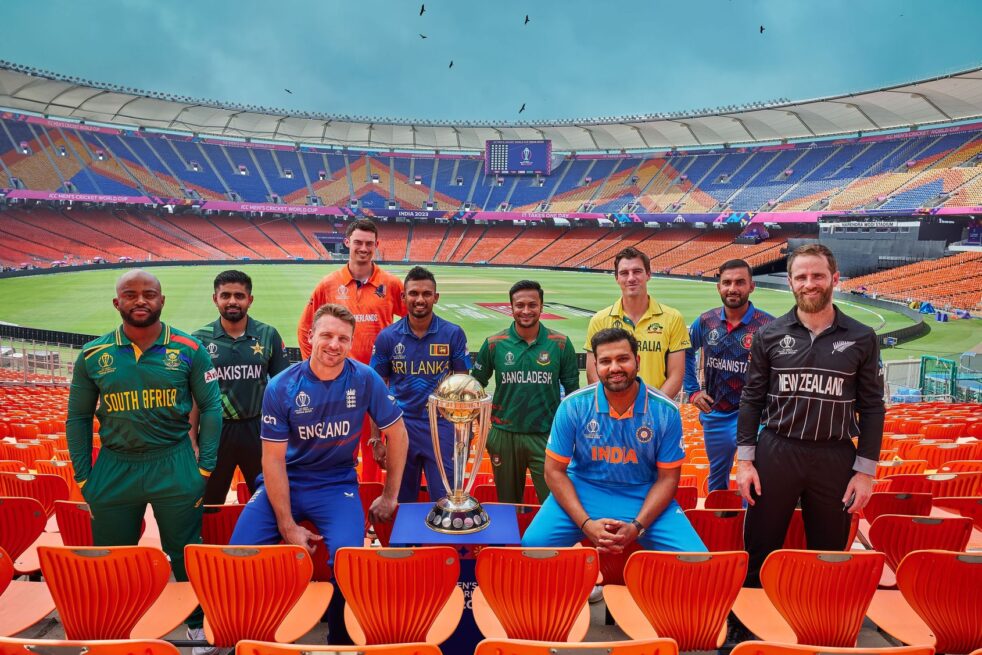Every four years, there is a special excitement around the world of cricket with the International Cricket Council (ICC) Cricket World Cup. This year’s tournament brings together 10 teams competing for the sport’s top title from Oct. 5 to Nov. 19 throughout India. The teams competing in the 2023 edition of the World Cup are India, South Africa, New Zealand, Australia, Afghanistan, Sri Lanka, Pakistan, Netherlands, Bangladesh and, the defending champions, England.
This World Cup is also known as the 50-50 World Cup. 50-50 matches consist of each team batting one inning, comprising 50 overs. Each over consists of six balls, where the batter can score between zero to six runs. At a time on the pitch, there are two batters with one being on strike and the other being a second runner with the roles switching up depending on the previous ball; from a fielding perspective, there are 11 fielders on the pitch, including the bowler. Bowlers deliver the ball towards the batter, who stands in front of the wicket. The team that bats first sets the “chase” or the runs needed, and the second team attempts to score more runs in their inning. An inning concludes when a team loses 10 wickets — 10 players get out; they reach the end of the 50 overs or, in the case of the second team, they reach their run chase score.
50-50 World Cup matches test a variety of factors for teams. With every game outdoors, the weather plays a large role in the team’s performance. For example, the pitches in India tend to favor the batters as the pitch soil enables less of a bounce and a spin. Additionally, cricket has two main types of bowlers: spinners and fast bowlers. Overcast and windy conditions help the fast bowlers. These conditions are common around pitches globally, such as in Australia and England, but in India, the weather does not provide the bowlers this advantage. Another tricky aspect, which is particular to the 50-50 style, is the tests of depth, stamina and endurance. The 50-50 style is a longer format, which brings in a greater need for the batters to play with greater control and understanding of when to take risks for extra runs. In this style, a match can last up to seven or eight hours.
This year’s World Cup has been exciting and has consisted of multiple high-scoring affairs. Each team plays in a round-robin style with the top four teams advancing to the semi-finals. Currently, as it stands on Oct. 30, India sits atop the table with a perfect 6-0 record, followed by South Africa with one loss then New Zealand and Australia with two losses. Afghanistan is right on the outside of the top four with three losses.
The defending champions, England, sit at the bottom, having only one win to their name.
South Africa has led a high powered batting attack, leading all teams with 1,998 runs thus far. Their top totals to this point have been 428 runs against Sri Lanka, 399 runs against England and 382 against Bangladesh. South Africa’s strong batting has been led by Quinton de Kock, who leads the tournament with 431 runs.
Australia has also been one of the strongest batting teams, having recorded 1,745 runs. Most notably, in their outing against the Netherlands, the team scored 399 runs. The highlight of the match was Glenn Maxwell hitting the fastest World Cup century, needing only 40 balls to do so.
On the other side, India has given up the fewest runs as they have only allowed 1,320 runs. This is an exceptional feat, as they have faced several power scoring teams and have significantly limited their outpouring of runs. India held Australia to 199 runs, Pakistan to 191 and England to 129. India’s bowling attack has been led by Jasprit Bumrah who is second in the tournament in wickets taken with 14 and third in run economy — runs given up per over bowled — with 3.92. India’s Ravindra Jadeja boasts one of the best economies of the tournament with 3.76. A signature moment from a bowling standpoint came when Kuldeep Yadav bowled an impressive ball and got English captain Jos Buttler out.
India has also been able to put forth several strong performances on the batting sides. Most notably, Virat Kohli put together 103 runs against Bangladesh, recording his 48th hundred in a one day match. The hundred put him in second place all time and just one shy of tying Sachin Tendulkar’s record of 49 one day centuries. He had a chance to tie the record against New Zealand but fell five runs short, getting out at 95 runs.
The 2023 Cricket World Cup has been filled with excitement, and it promises to be full of more as the tournament gets closer to its finish. As the stakes of the games become even greater, the star players have the chance to forever etch their name in cricket history.
